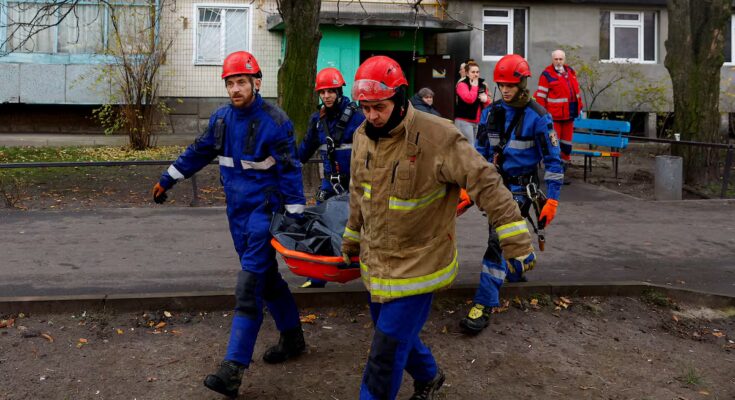At least four people died in the early hours of this Friday in Kiev, the capital of Ukraine, once again at the center of attacks carried out by Russia in the last few hours in various regions of the country. For almost eight hours the sky has been the scene of the arrival of almost half a thousand drones and almost twenty missiles of different types launched by the Kremlin troops which the local anti-aircraft defenses have tried to intercept. The target this time in the country’s main city were around thirty residential buildings in different neighborhoods. Emergency services actions continue to unfold as daylight arrives.
An initial assessment by the capital’s mayor, Vitali Klitschko, spoke of three dead and thirty injured, including at least two children and a pregnant woman. Shortly afterwards, Ukrainian President Volodymyr Zelenskyj, calling it a “cruel attack”, increased the number of victims to four.
“It was a deliberately calculated attack with the aim of causing maximum damage to the population and civilian infrastructure. In Kiev alone, dozens of apartment buildings were damaged,” the president denounced through his social networks, where he reported some damage to the Azerbaijani embassy due to shrapnel from an Iskander missile.
In addition to Kiev, the attacks hit the Kharkiv, Odessa and Sumi regions. “We are working intensively with our partners to strengthen our air defense, but it is not enough,” Zelensky added, warning about his armed forces’ ability to launch a “long-range” response.
“We need reinforcements with additional systems and interceptor missiles. Europe and the United States can help,” he said amid controversy over Washington’s insistent request, accompanied by denials, for powerful Tomahawk missiles. But US President Donald Trump has expressed reluctance about the escalation this could mean in the conflict.
The attack began shortly after midnight, with the Ukrainian capital plunged into darkness due to power cuts imposed by the Russian offensive on energy infrastructure at the dawn of the fourth winter since Moscow launched the large-scale invasion in February 2022. This is a strategy already implemented in previous years which, on this occasion, finds a response from Ukraine, which is in turn bombing critical supply points in the neighboring country in a sort of “tit-for-tat” that sees between the main victims were civilians. “Russia can still sell oil and carry out its projects. All this must stop,” Zelensky complained in his message.



